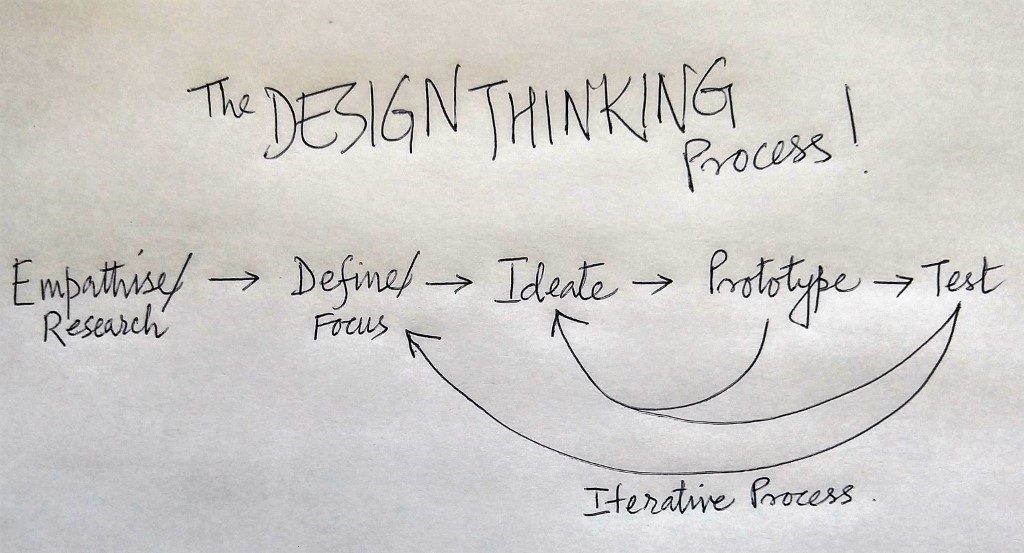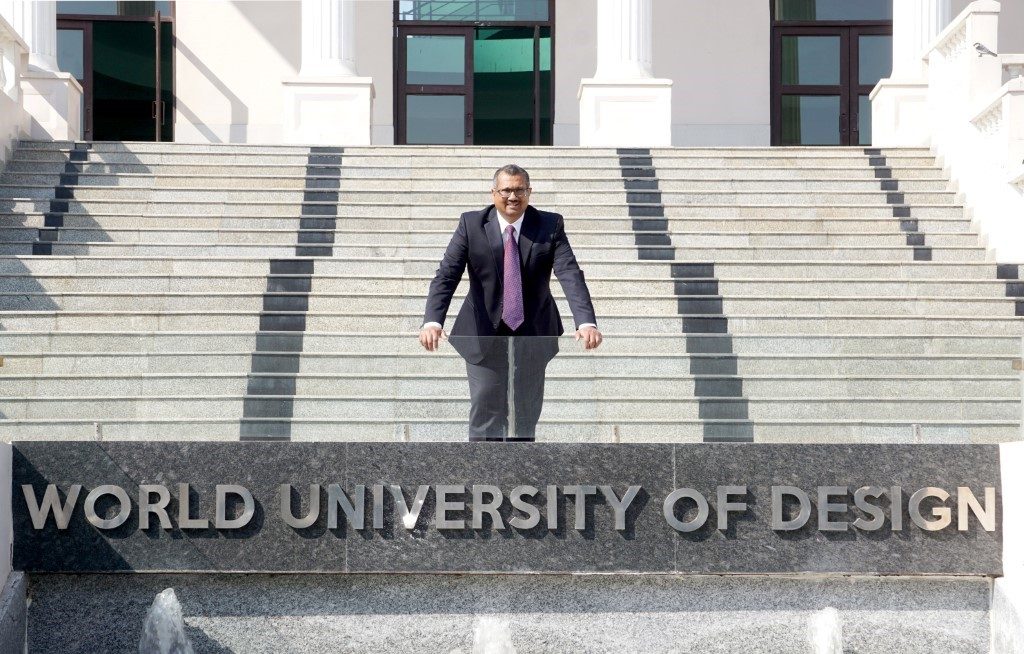The focus of education in our country has forever been on the transfer of content and knowledge. The curriculum is broadly structured around the basic topics of language (literacy), history, social studies, sciences and mathematics. For each of these topics, the content has been broken down into small, manageable bundles, each of which is then taught according to a prescribed lesson plan. Most of the teaching in our country is governed by this basic framework, from the first day of school through to university education. All efforts at changing the focus or the methodology, unfortunately continues to find newer ways of getting ‘manageable bundles’ of existing knowledge into student‘s brains.
The world around us has however changed drastically. We are now headed into a world where humans as mere containers of knowledge will no longer be relevant. The world today is far more complicated and the problems we face are far more complex. In the words of Einstein, “We can’t solve our problems by using the same kind of thinking we used when we created them.” Instead of looking at the needs of the system as it exists, we need look at the needs of people, and then design ways the system could meet its goals by serving these needs? This is the heart of how design thinking gets to innovative solutions – emphasising on people, on human talents and abilities.
The concept of design thinking came into being in the 90’s when companies like Apple and P&G found themselves facing competition from smaller players. To stay ahead, they looked to design consultancies for help with improving their products and services. These companies brought in designers to apply their thinking to corporate problems. Design thinking got Apple to focus on people’s needs and desires, rather than the needs of the business and become a market disruptor. P&G adopted design strategy and innovation as one of their main turn-around planks, redesigned & positioned products like Oil of Olay increasing its market capture multiple times. The concept has since then spread through various sectors proving to be an effective approach for making changes across a variety of professions such as research, business and management. Educators too have begun to explore ways to infuse Design Thinking into students’ learning, successfully applying it to education in K-12, under-graduate, graduate and professional training. There are plenty of examples already displaying the benefit of design thinking in education.
So What Exactly Is Design Thinking?
At its most basic, Design Thinking is a problem-solving process. It’s however a ‘deeply human’ and non-linear process where one thinks like a ‘designer’ to create an innovative solution that addresses people’s needs. It places the people it’s trying to help at the centre and then thinks not just about a solution, but also how those people will feel when they use the solution. In design education, thinking this way is a standard procedure where creativity, technology and empathy all come into play as ‘designers’ brainstorm ideas, even the most outrageous ones. The best solutions are generated through repeated trial and error, and the testing of prototypes.

Design Thinking is best suited to addressing problems where multiple domains collide, at the intersection of business and society, logic and emotion, rational and creative, human needs and economic demands and between systems and individuals. It would seldom be used to tackle tame problems i.e. problems that are simple and that have fixed and known solutions — unless we were seeking a novel or innovative solution with a desired goal different from the usual.
Design Thinking works best in situations where we need to make human sense of things, approaching challenges in ways that best suit human needs. It starts with intent, a desire, or a need to improve the situation. It gives us the tools to explore ‘What Could Be’. It offers a way of digging deeper to find new ways of improving the product, service or design.
Design thinking can also be described as a mindset that can be applied in almost any scenario where innovation or an out-of-the-box thinking is required. It can be combined with methodologies & techniques from other disciplines, business strategies, social innovation models, and management practices. It’s something that changes depending on the context. Though a typical design thinking method involves five stages, the stages are not always sequential, they do not have to follow any specific order, and can often occur in parallel and be repeated iteratively any number of times to arrive at a workable end solution.
Why all of the interest in design thinking?
Because it works. To put it simply, whenever you focus on human wants, needs, and desires, and then use design thinking to come up with novel ways to make them better or learn something new, you will always get interesting results. Further, the solutions will almost always cost way less than some monolithic, systemic strategies.
Design thinking in Education
What distinguishes the 21st century from the 20th century is that we have evolved from a knowledge economy into a design economy. For our students to thrive in this new economy, they need to be able to create innovative breakthroughs by integrating ideas from diverse fields to meet complex human needs. Real-world problems are not bound by disciplinary boundaries; they are complex and complicated, often requiring solutions that cut across domains. Take for example AIDS. It is a medical problem for which the field of medicine must find a cure. But connected to it are numerous social issues such as those related to ostracism, depression, anxiety, a tendency to get revenge, frustration, social isolation, relationship problems, and fear due to the social stigma; besides psychological problems like marital problems, family conflict, lack of family support, economic hardships, and social rejection of patient’s families; and family problems like unemployment, the need for housing, basic needs, homelessness, and lack of social support. Design Thinking provides the key to effective learning experiences that can equip our students with such 21st century competencies and skills like civic literacy, social innovation, global awareness and cross-cultural skills, critical and inventive thinking, and information and communication skills.
Design Thinking can be used as a pedagogical strategy to help students develop an innovator’s mindset with a disposition for problem-solving, connect what they learn in class to real world challenges, encourage ideation, teach them to collaborate and work in teams, build empathy by getting them to think about the needs of other people, and foster the kind of creativity and solutions-driven thinking required in 21st century workplaces. Design thinking projects are so rich in content that they allow you to address many educational objectives at the same time. It can be used by teachers to frame challenges across curriculum areas, including those not normally associated with technology or design, such as liberal arts, social studies, English, and mathematics.

Nearly 80 percent of the time students spend in a classroom is still spent passively listening to lectures. This gets boring, is not the best way to learn, and also fails to teach valuable soft skills needed today. Structuring a class or activity around design-thinking and entrepreneurship (or social activism or service learning) can reignite the participation and learning of students who don’t want to leave when the bell rings, and even enjoy working on weekends and all summer long. Nothing is as engaging or stimulating as working together to solve an interesting problem.
Design thinking is not supposed to work for all subjects and all topics at all times. An important aspect of this approach is to give students room to fail. To create a solution that really works, you have to fail early – that’s where you get new insights to improve. Students must also be encouraged to explore their ideas fully, and not be overly critical of themselves. They should be able to go backwards to better understand the problem and try again when their ideas and prototypes fail. What design thinking suggests is that it doesn’t matter whether your idea sounds stupid or clever or wild or crazy – put it out there and it’ll be looked at, because it might trigger off something, somewhere.
Design thinking isn’t just a discipline for students. It’s an effective way to tackle problems like test anxiety, bullying, failure rates, wasted lunch food, tardiness, dress code violations, and more. Unlike traditional top-down problem solving, this process requires leaders to listen to the people who are experiencing the problem and understand their pain points.
If students are suffering from anxiety and missing school, we need to ask them questions to find out why. We need to understand their experience before we can start to solve the problem. It may not be enough to implement a new exam calendar or appoint more guidance counsellors. Maybe it requires training of teachers in strategies that create a calm, supportive environment – like using voice, body language and predictable routines to make students comfortable. We need to continually evaluate the effectiveness of any solution and ensure that it actually solves the problem.
Design thinking requires us to test our solutions. The design thinking process turns all of us into listeners, experimenters and learners. When we embrace it, we realise that the best solutions don’t come from a single genius (or leader) with all the answers, but from people willing to listen, test, refine and persist until they find something that actually works. More importantly, design thinking can be used as a tool for activating change at a leadership level.
The future of design thinking
To break paradigms and create the futures we aspire to live in, we have to move beyond designing for today, look toward the future and make changes befitting our capabilities and culture. Since the future will continues to evolve, we must also continue to make changes. Future of design thinking is about going beyond designing for today’s problems. We need to factor in strategic foresight and future trends.
We must work to understand where that edge of innovation exists in education. Based on that understanding, we can work backward to ideate and test the appropriate/necessary shifts in our approaches that get us closer to that edge… and perhaps create a visible path to the future we envision for our institutions. This is about using the principles of strategic foresight and design thinking to embrace uncertainty, identify opportunities, and make those small but significant changes.
